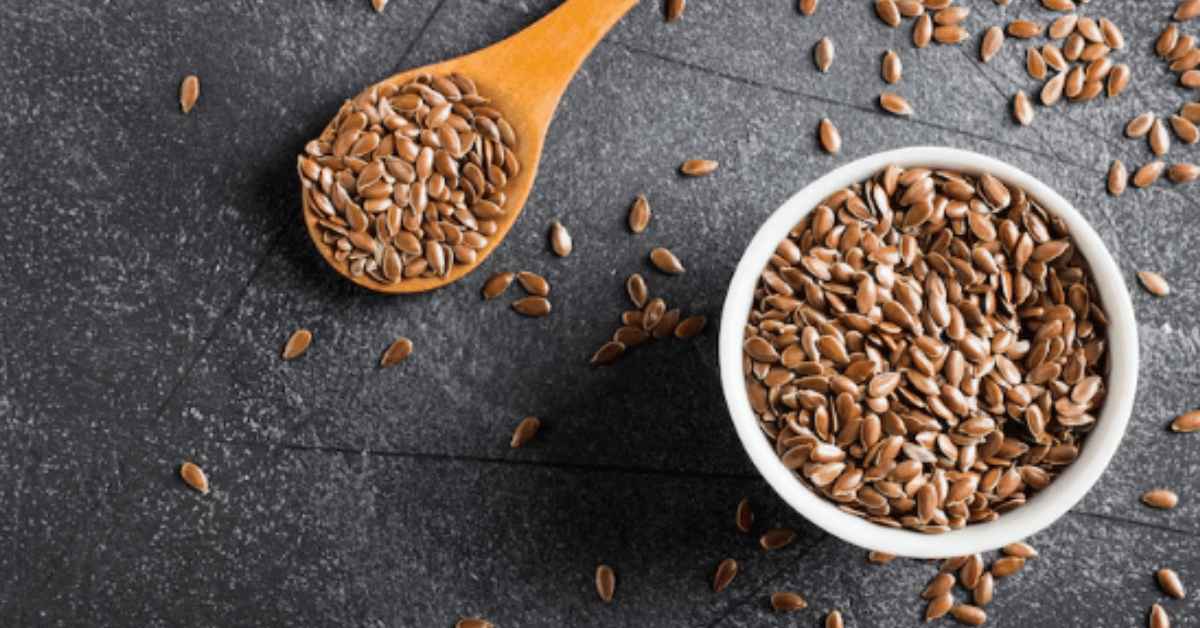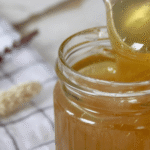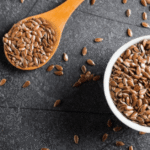Linseed, commonly known as flaxseed, has transitioned from being a humble ancient crop to a global superfood and sustainable resource. In the first glance, the word “linseed” may conjure images of rustic fields or natural oils, yet its modern identity spans wellness, eco-manufacturing, and nutrition. Within the first 100 words, it is crucial to understand that linseed is not just a dietary addition; it represents a balance between human health and environmental responsibility. It’s a seed that nourishes, heals, and sustains. Linseed oil fuels industries, its fibers fortify eco-friendly textiles, and its nutrient-rich composition supports heart health, digestion, and cellular rejuvenation. Today, linseed is being rediscovered as a cornerstone of holistic living—a natural connector between the ancient earth and modern science.
For over 7,000 years, linseed has been cultivated for its extraordinary versatility. It was one of the earliest domesticated crops, praised for both its seeds and fibers. Ancient Egyptians used it in linens and cosmetics, while early physicians prescribed its oil for digestive issues. Today, the same seed finds new life in industries ranging from nutrition supplements to biodegradable plastics. “The future of food lies in rediscovering the wisdom of nature,” says Dr. Ellen Hayes, a food sustainability researcher. Linseed perfectly embodies that philosophy—small in size but vast in impact, merging the wisdom of the past with the innovation of the present.
The Nutritional Composition of Linseed
Linseed’s nutritional structure is its greatest strength. Rich in alpha-linolenic acid (ALA), an essential omega-3 fatty acid, it supports cardiovascular health and reduces inflammation. Beyond its fat profile, linseed is an excellent source of dietary fiber, plant-based protein, lignans, and micronutrients such as magnesium, thiamine, and selenium. These nutrients make linseed an effective dietary supplement for promoting gut health, balancing hormones, and strengthening the immune system. Unlike many processed foods, linseed provides a naturally balanced combination of macronutrients and antioxidants, delivering slow, sustained energy while reducing oxidative stress on cells.
| Nutrient | Amount (per 100g of Linseed) | Health Benefit |
|---|---|---|
| Omega-3 Fatty Acids (ALA) | 22g | Improves heart health, reduces inflammation |
| Dietary Fiber | 27g | Enhances digestion, supports weight management |
| Protein | 18g | Builds and repairs body tissues |
| Lignans | 300mg | Balances hormones, provides antioxidant benefits |
| Magnesium | 392mg | Regulates muscle and nerve function |
| Selenium | 26µg | Boosts immune system, protects cells from damage |
Linseed Oil: Nature’s Liquid Gold
Linseed oil, extracted through cold pressing, has been revered for centuries. Its applications are diverse: it’s a culinary supplement, a natural preservative, and even a base for paints and wood finishes. When consumed, linseed oil aids in regulating cholesterol and maintaining skin elasticity. Externally, it acts as a natural emollient, soothing irritation and promoting healing in dry skin conditions. Industrially, its quick-drying property makes it valuable in manufacturing eco-friendly paints, linoleum, and even bio-based polymers. “Linseed oil is one of those rare substances that bridges the worlds of nutrition and industry,” notes chemist Robert Lang in his study on bio-material applications.
Linseed and Digestive Wellness
The fiber-rich structure of linseed makes it an excellent natural aid for digestive health. Soluble fibers help regulate bowel movements, while insoluble fibers add bulk, supporting a balanced gut microbiome. Regular consumption has been associated with reduced symptoms of constipation and improved colon health. Modern dietitians often recommend linseed as a prebiotic food—one that nourishes beneficial gut bacteria. Studies also indicate that its mucilage content helps soothe the lining of the stomach and intestines, promoting overall gastrointestinal balance. When mixed with water, linseed forms a gel-like texture that aids digestion and enhances nutrient absorption from other foods.
Linseed in Skincare and Beauty Science
In the evolving beauty industry, linseed has emerged as a quiet revolution. Linseed oil’s omega-rich profile restores the lipid barrier of the skin, reducing dryness and premature aging. It is now used in facial serums, moisturizers, and scalp treatments due to its anti-inflammatory nature. Moreover, lignans act as antioxidants that neutralize free radicals, helping the skin maintain elasticity and radiance. The resurgence of plant-based cosmetics has placed linseed oil at the center of many natural formulations. “Nature’s beauty solutions often come from its smallest gifts,” shares beauty expert Lila Ortez. Linseed exemplifies this principle—gentle, effective, and deeply nourishing.
Sustainable Manufacturing: Linseed Beyond Food
The significance of linseed extends well beyond nutrition. Linseed fibers are increasingly replacing synthetic materials in eco-industrial production. The flax plant’s stem fibers are durable, flexible, and biodegradable, making them ideal for manufacturing textiles, insulation panels, and biodegradable composites. Automotive companies use flax fiber-reinforced plastics to reduce vehicle weight and enhance sustainability. Linseed oil is also used as a binder in natural paints and wood preservatives. As global industries move toward circular economy principles, linseed stands as a renewable material with minimal ecological footprint. It not only replaces petrochemical products but also reduces carbon emissions through sustainable cultivation.
| Industrial Application | Linseed Component Used | Environmental Benefit |
|---|---|---|
| Eco-friendly Paints | Linseed Oil | Reduces use of synthetic chemicals |
| Biodegradable Plastics | Linseed Fiber | Provides renewable alternative to petroleum-based plastics |
| Textile Industry | Flax Fibers | Promotes sustainable fashion |
| Automotive Composites | Flax Fiber Panels | Reduces vehicle weight and carbon emissions |
| Wood Treatment | Linseed Oil | Natural protective coating without toxins |
Linseed and Heart Health
One of the most widely recognized benefits of linseed is its ability to support cardiovascular function. The omega-3 fatty acids help lower LDL (bad cholesterol) and maintain arterial flexibility. Its lignans contribute to reducing oxidative damage in blood vessels, preventing the buildup of plaque. Additionally, the potassium and magnesium content in linseed aid in regulating blood pressure. Studies have linked regular linseed consumption with decreased risk of coronary artery disease and hypertension. The seed’s nutrient density also supports blood sugar balance, making it beneficial for individuals managing diabetes. The integration of linseed into daily diets—whether through smoothies, baked goods, or oils—offers a holistic approach to heart health.
Linseed in Modern Diets and Culinary Innovations
Linseed’s adaptability makes it an easy addition to contemporary meals. Ground linseeds can be incorporated into bread, yogurt, or smoothies, offering a subtle nutty flavor and nutritional boost. Bakers often use it as a vegan substitute for eggs by mixing ground linseeds with water. Culinary innovators are experimenting with linseeds protein powders and energy bars as plant-based alternatives for athletes and vegans. The growing trend of functional foods—those designed to provide specific health benefits—has positioned linseeds as a versatile ingredient. It aligns perfectly with the modern preference for foods that nourish both body and mind, offering a simple yet powerful dietary addition.
Environmental Importance of Linseed Cultivation
Linseed cultivation plays a meaningful role in sustainable agriculture. The crop requires minimal water and adapts well to diverse climates. Its deep root system improves soil health by preventing erosion and enhancing organic matter. Linseeds also functions as an excellent rotational crop, helping farmers maintain soil fertility. Unlike monoculture-dependent crops, it enriches ecosystems by supporting pollinators and reducing pesticide dependence. The environmental value of linseeds goes hand-in-hand with its nutritional benefits. As global discussions around regenerative agriculture grow louder, linseeds emerges as a model crop—sustaining both the planet and the people who cultivate it.
Linseed in Historical and Cultural Context
Linseed’s history is intertwined with human civilization. In ancient Babylon, it symbolized prosperity, while in Rome, it was valued for its healing properties. In medieval Europe, linseeds oil was used in religious ceremonies and manuscript preservation. The seed’s cross-cultural presence highlights its multifaceted value—spiritual, medicinal, and practical. Modern rediscovery of linseeds mirrors a return to mindful living, where simplicity and sustainability intersect. “Linseed connects us to our agrarian roots, reminding us that nature has always provided what we need,” says cultural historian Naomi Kells. This continuity between ancient practices and modern applications makes linseeds not just a product, but a cultural symbol of resilience.
Linseed in Medicine and Research
In the realm of medical science, linseed’s studied for its therapeutic potential. Its anti-inflammatory and antioxidant compounds show promise in managing chronic diseases like arthritis and diabetes. Lignans in linseeds may help balance estrogen levels, contributing to reduced risks of certain cancers. Its high fiber content aids in lowering cholesterol and improving digestive disorders. Researchers are exploring linseed’s neuroprotective effects, particularly its potential to support brain health and cognitive function. As pharmaceutical industries pivot toward plant-based medicine, linseeds stands as a reliable natural compound—proven by centuries of use and supported by emerging clinical evidence.
Global Market and Future Prospects of Linseed
The linseed market is expanding rapidly, driven by increasing awareness of plant-based nutrition and sustainable manufacturing. North America and Europe lead in production, while Asian markets are embracing it as a staple superfood. The demand for linseeds oil in cosmetics and biodegradable packaging continues to rise. With growing investments in agri-tech and clean manufacturing, linseeds farming is expected to become a model for future bio-economy strategies. Governments and sustainability councils are encouraging its cultivation as part of low-carbon agricultural systems. The future of linseed lies not just in its consumption, but in its contribution to a greener, healthier world.
Linseed’s Role in Climate-Friendly Diets
Climate-conscious consumers are increasingly turning to linseeds as a sustainable protein source. Unlike animal-based products, linseeds requires minimal land and water resources, producing fewer greenhouse gas emissions. This makes it a valuable addition to plant-based diets that align with environmental ethics. Its carbon sequestration capability further enhances its eco-value. Incorporating linseeds into diets not only supports personal health but also contributes to planetary wellness. As awareness of food’s environmental impact grows, linseed’s position as a “climate crop” solidifies. Its ability to nourish without depleting the earth positions it as an essential ingredient for future food systems.
Linseed Storage, Preparation, and Consumption
Proper storage and preparation are key to preserving linseed’s benefits. Whole seeds can be kept in airtight containers away from sunlight, while ground linseeds should be refrigerated to prevent oxidation. Consuming freshly ground seeds ensures better nutrient absorption. A tablespoon daily, added to oatmeal or smoothies, is sufficient to experience its benefits. Linseeds oil should never be overheated, as high temperatures degrade its nutrients. Culinary experts recommend cold applications—salad dressings, drizzles, or smoothie blends. With minimal effort, linseeds integrates seamlessly into daily routines, offering long-term nutritional and environmental value in every small serving.
Conclusion
Linseeds stands at the intersection of health, history, and sustainability. It has proven itself a superfood long before the term existed—a nutrient powerhouse that supports both human vitality and ecological integrity. From its rich omega-3 content to its industrial versatility, linseeds embodies the future of conscious consumption. Its ability to heal, nourish, and sustain makes it one of nature’s most profound gifts to humanity. “Every seed carries a story of survival and renewal,” wrote agronomist Paul Keller, “and linseeds tells it best.” In a world seeking balance between progress and preservation, linseeds quietly reminds us that sometimes, the most powerful solutions are found in the simplest seeds.
FAQs
Q1: Is linseed the same as flaxseed?
Yes, linseed and flaxseed come from the same plant, Linum usitatissimum. The term “linseed” is typically used for industrial or oil-producing varieties, while “flaxseed” refers to edible seeds.
Q2: How can linseed improve heart health?
Linseed’s rich in alpha-linolenic acid (ALA), a plant-based omega-3 fatty acid that helps reduce bad cholesterol, inflammation, and arterial stiffness.
Q3: Can linseed help with weight management?
Yes, the high fiber content promotes satiety, improves digestion, and stabilizes blood sugar, making it beneficial for healthy weight maintenance.
Q4: Is linseed safe for daily consumption?
Absolutely. One to two tablespoons of ground linseed per day is safe and effective for most adults when paired with adequate hydration.
Q5: What makes linseed sustainable?
Linseeds requires minimal water, enriches soil health, and produces biodegradable fibers and oils, contributing to eco-friendly agriculture and manufacturing.











